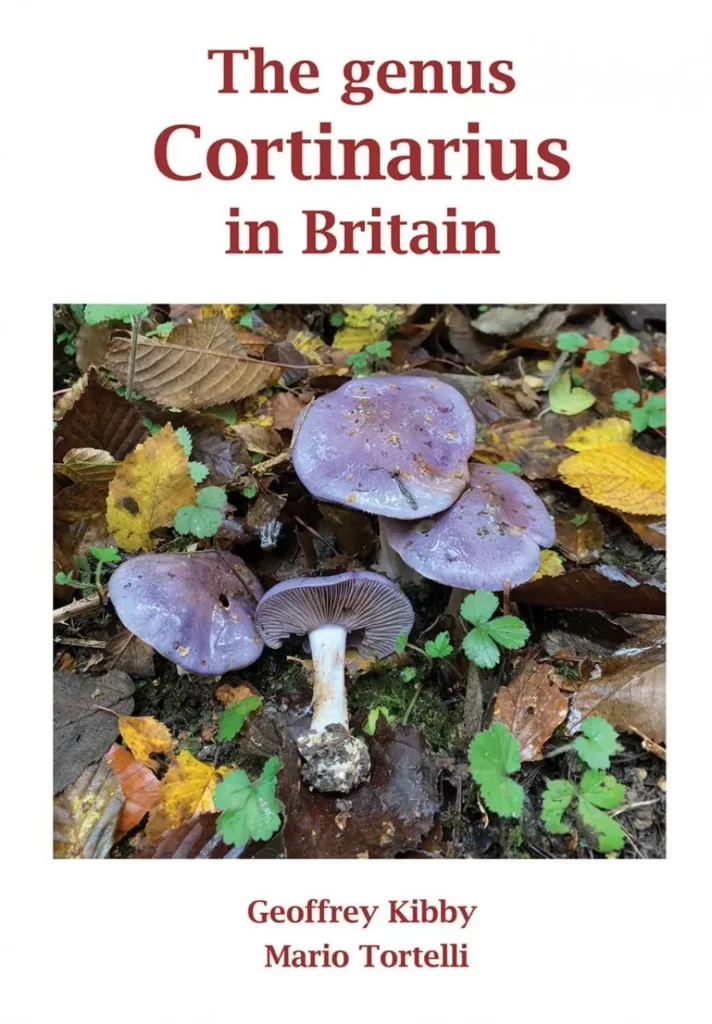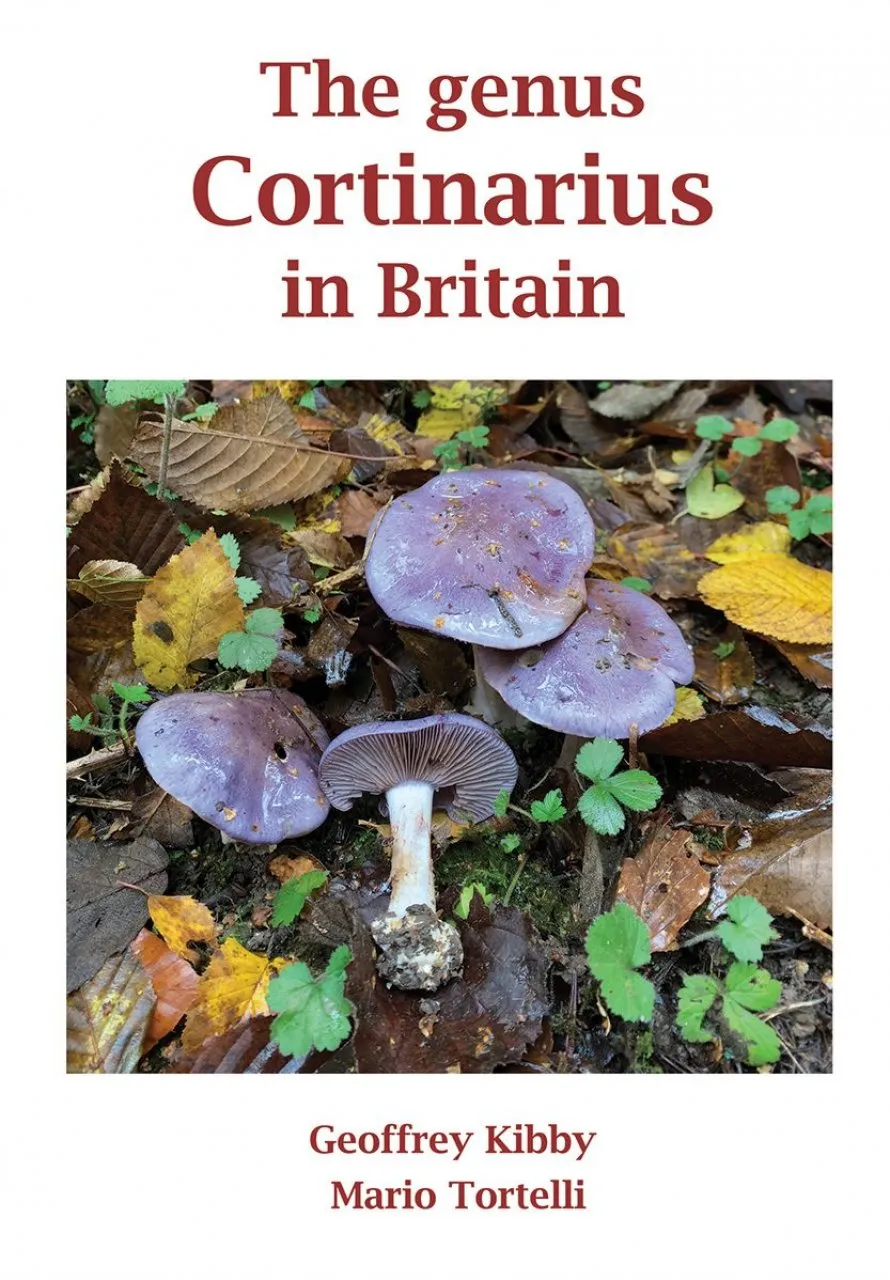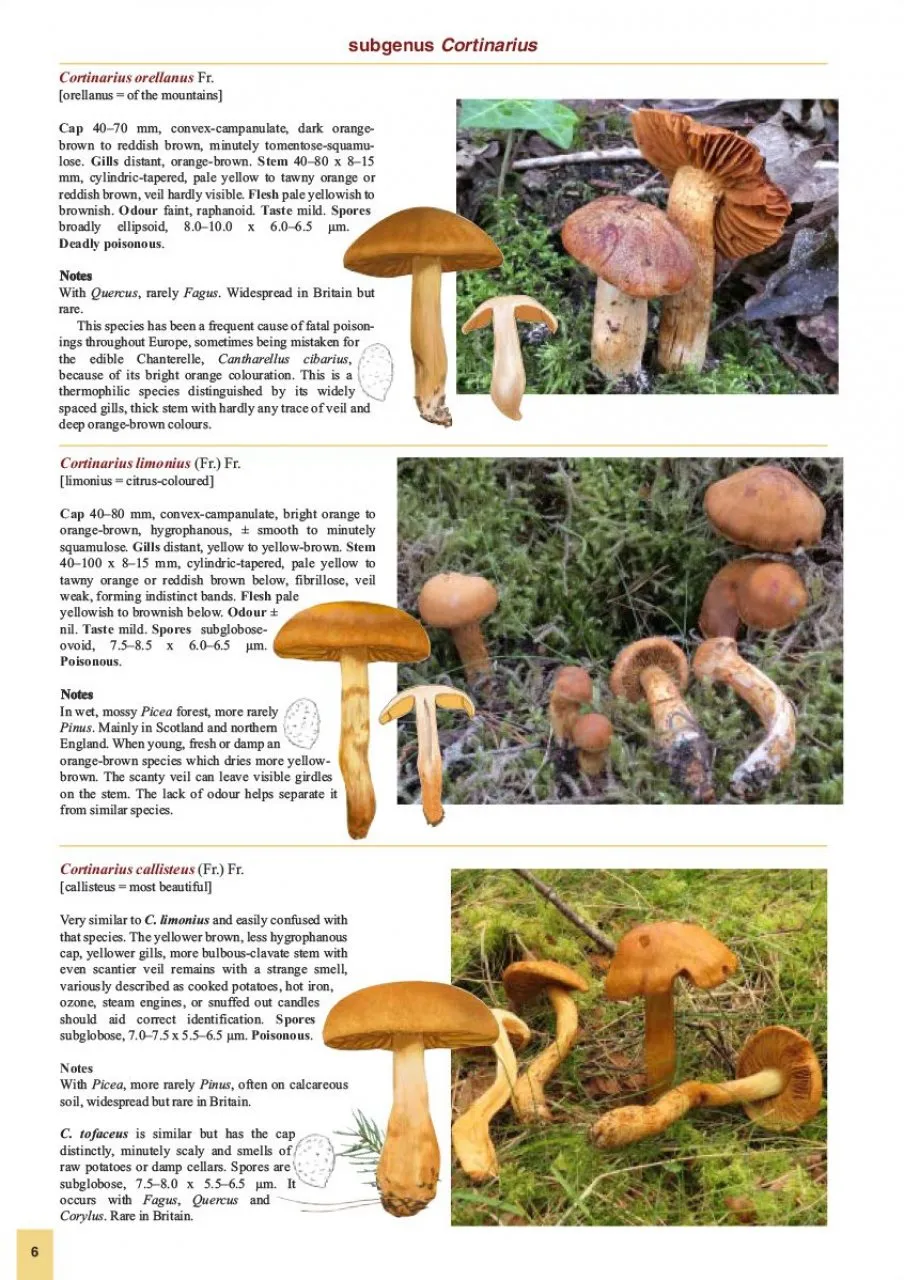Cortinarius is the largest genus of agaric fungi in the world, and also in Britain. We might have as many as 400 species, of which 330 are described and illustrated in this new book, the first affordable modern monograph in English. This is a genus approached with trepidation and even dread by field mycologists, but it includes many large and colourful ‘mushrooms’ that are not too difficult to identify. There are lots of characters to play with. There are the pretty colours: lilac, primrose yellow, warm browns, even reds. There are all kinds of textures, from scaly to slimy; some strong and memorable smells (iodoform, goat’s cheese, orange blossom, cedar wood, mud, steam engines); stems with various sheaths, bulbs and changing colours; and, if all fails, as it often will, there is DNA sequencing. I was amazed to learn that some field groups are now doing this themselves. Many pictures in this splendidly illustrated book are marked with a red dot indicating that they have been identified in this way – sometimes the only way to be certain with those awkward LBJs in the Telemonia subgenus.
View this book on the NHBS website
This monograph has keys, descriptions and notes for every species, but its crowning glory is the pictures: coloured drawings by Geoffrey Kibby combined with colour photographs taken in situ by Mario Tortelli. Both are of excellent quality and are well printed. Many of the drawings are taken from Volume 3 part 2 of Kibby’s Mushrooms and Toadstools of Britain and Europe, which of course included Cortinarius. This monograph, however, adds more species, keys, detailed accounts of history and of the subgenera, as well as the all-important field pictures. Now I know that the beautiful sky-blue Cortinarius that sometimes appears on a local woodbank, and which I identified so confidently as C. croceocaeruleus, has a similar lookalike I did not know about. Similarly, the bright yellow ‘Cort’ that appears in quantity in some years, and which seemed a dead cert as C. callichrous, has in fact several lookalikes. Admittedly they are all rare, but that may be because they are not in the usual field guides and so have been overlooked. Ah well, back to the drawing board. Too many Corts, that is the trouble. If you want to get into them, you will need this state-of-the-art guide. And, besides, it is lovely to look at.


